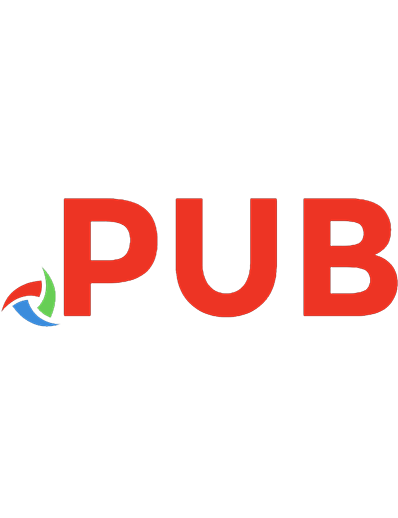Introduction to Classical Mechanics with Problems and Solutions 9780521876223
This textbook covers all the standard introductory topics in classical mechanics, including Newton's laws, oscillat
3,009 734 65MB
English Year 2008
Table of contents :
Preface
1 Strategies for solving problems
1.1 General strategies
1.2 Units, dimensional analysis
1.3 Approximations, limiting cases
1.4 Solving differential equations numerically
1.5 Problems
1.6 Exercises
1.7 Solutions
2 Statics
2.1 Balancing forces
2.2 Balancing torques
2.3 Problems
2.4 Exercises
2.5 Solutions
3 Using F = ma
3.1 Newton’s laws
3.2 Free-body diagrams
3.3 Solving differential equations
3.4 Projectile motion
3.5 Motion in a plane, polar coordinates
3.6 Problems
3.7 Exercises
3.8 Solutions
4 Oscillations
4.1 Linear differential equations
4.2 Simple harmonic motion
4.3 Damped harmonic motion
4.4 Driven (and damped) harmonic motion
4.5 Coupled oscillators
4.6 Problems
4.7 Exercises
4.8 Solutions
5 Conservation of energy and momentum
5.1 Conservation of energy in one dimension
5.2 Small oscillations
5.3 Conservation of energy in three dimensions
5.4 Gravity
5.5 Momentum
5.6 The center of mass frame
5.7 Collisions
5.8 Inherently inelastic processes
5.9 Problems
5.10 Exercises
5.11 Solutions
6 The Lagrangian method
6.1 The Euler–Lagrange equations
6.2 The principle of stationary action
6.3 Forces of constraint
6.4 Change of coordinates
6.5 Conservation laws
6.6 Noether’s theorem
6.7 Small oscillations
6.8 Other applications
6.9 Problems
6.10 Exercises
6.11 Solutions
7 Central forces
7.1 Conservation of angular momentum
7.2 The effective potential
7.3 Solving the equations of motion
7.4 Gravity, Kepler’s laws
7.5 Problems
7.6 Exercises
7.7 Solutions
8 Angular momentum, Part I (Constant L)
8.1 Pancake object in x-y plane
8.2 Nonplanar objects
8.3 Calculating moments of inertia
8.4 Torque
8.5 Collisions
8.6 Angular impulse
8.7 Problems
8.8 Exercises
8.9 Solutions
9 Angular momentum, Part II (General L)
9.1 Preliminaries concerning rotations
9.2 The inertia tensor
9.3 Principal axes
9.4 Two basic types of problems
9.5 Euler’s equations
9.6 Free symmetric top
9.7 Heavy symmetric top
9.8 Problems
9.9 Exercises
9.10 Solutions
10 Accelerating frames of reference
10.1 Relating the coordinates
10.2 The fictitious forces
10.3 Tides
10.4 Problems
10.5 Exercises
10.6 Solutions
11 Relativity (Kinematics)
11.1 Motivation
11.2 The postulates
11.3 The fundamental effects
11.4 The Lorentz transformations
11.5 Velocity addition
11.6 The invariant interval
11.7 Minkowski diagrams
11.8 The Doppler effect
11.9 Rapidity
11.10 Relativity without c
11.11 Problems
11.12 Exercises
11.13 Solutions
12 Relativity (Dynamics)
12.1 Energy and momentum
12.2 Transformations of E and p
12.3 Collisions and decays
12.4 Particle-physics units
12.5 Force
12.6 Rocket motion
12.7 Relativistic strings
12.8 Problems
12.9 Exercises
12.10 Solutions
13 4-vectors
13.1 Definition of 4-vectors
13.2 Examples of 4-vectors
13.3 Properties of 4-vectors
13.4 Energy, momentum
13.5 Force and acceleration
13.6 The form of physical laws
13.7 Problems
13.8 Exercises
13.9 Solutions
14 General Relativity
14.1 The Equivalence Principle
14.2 Time dilation
14.3 Uniformly accelerating frame
14.4 Maximal-proper-time principle
14.5 Twin paradox revisited
14.6 Problems
14.7 Exercises
14.8 Solutions
Appendix A Useful formulas
Appendix B Multivariable, vector calculus
Appendix C F = ma vs. F = dp/dt
Appendix D Existence of principal axes
Appendix E Diagonalizing matrices
Appendix F Qualitative relativity questions
Appendix G Derivations of the Lv/c2 result
Appendix H Resolutions to the twin paradox
Appendix I Lorentz transformations
Appendix J Physical constants and data
References
Index


![Statistical Mechanics: Problems With Solutions [8]
0750314206](https://dokumen.pub/img/200x200/statistical-mechanics-problems-with-solutions-8-0750314206.jpg)






![Quantum Mechanics: Problems and Solutions [1 ed.]
9814800724, 9789814800723](https://dokumen.pub/img/200x200/quantum-mechanics-problems-and-solutions-1nbsped-9814800724-9789814800723.jpg)
